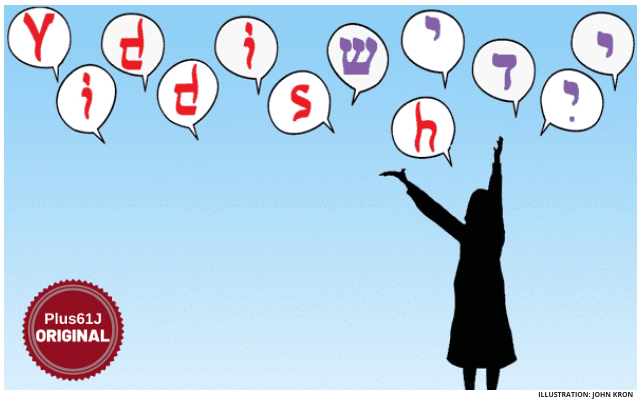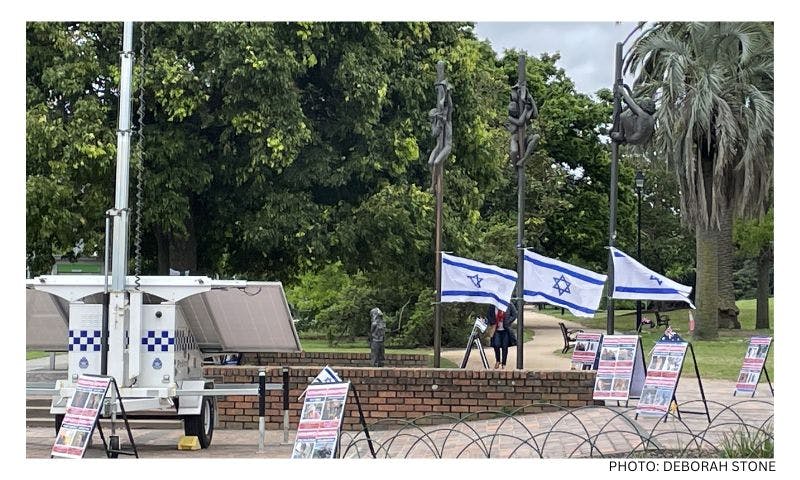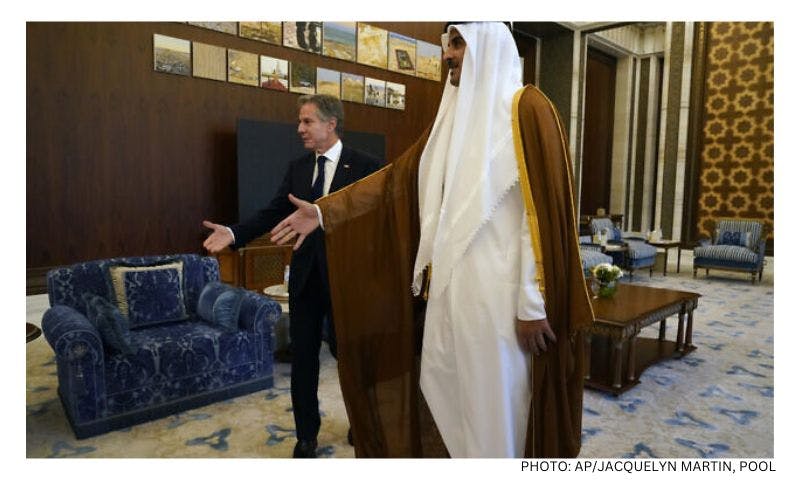Published: 31 May 2019
Last updated: 4 March 2024
It was never an option for me to learn Yiddish organically. It was lost in my family in one generation as my grandparents and great-grandparents settled into life in South Africa in the first half of the 20th century. It takes commitment and energy for parents to ensure that children retain the language of their home, their mamaloshen, rather than simply adopting the language of the dominant culture.
I was privileged to have a Hebrew education from a young age. I learnt to love and access the language of our liturgy, and texts and to be able to understand and talk a bit when I visit Israel. These are truly wonderful gifts.
But the focus on Hebrew education came with a dollop of disrespect for Yiddish – simultaneously presented as the language of weak diaspora Jews – 85 per cent of Jews murdered by Nazis spoke Yiddish - and nostalgically as the cutesy language of a lost era.
It wasn’t until I was older that I understood contempt for Yiddish as itself contemptuous, and the result of attitudes to Yiddish in Israel, which delegitimised anything that challenged the primacy of Hebrew.
Soon after moving to Melbourne in 1985 I became aware of secular Yiddishists who were deeply committed to nurturing the language and culture. Its proponents were largely the children and grandchildren of Bundists, heirs to a political tradition that saw the solution to the Jewish experience of suffering and persecution in the idea of doykeit – the principle that we are obliged to shape and improve our communities wherever we live, a very different political model from Zionism. It was all new and intriguing, but for me the Yiddish language was the magnet and over the years I crept closer to the centres of Yiddish culture – attending events, listening to Yiddishists and developing a deep respect for the founders of institutions like Kadimah and Sholem Aleichem in Melbourne, and Yivo in New York. By promoting and preserving the Yiddish language, texts and culture, these places have made it possible for a language spoken by Jews for close to 1,000 years to be learnt by new generations.
The Yiddish landscape has really shifted in recent years. Shayna Weiss documents changing attitudes to Yiddish in Israel, and the take up of Yiddish cultural offerings is truly phenomenal. In Melbourne people can’t get enough of language classes, there’s an annual Yiddish street festival, and amazing attendance at Yiddish theatre performances and Yiddish musical gigs. In New York an all Yiddish production of Fiddler on the Roof has been successful beyond expectations.
And yet Yiddish is still the subject of Jewish cultural wars. There is minimal interplay between Yiddish speaking secular and Haredi communities. For perhaps as many as 700,000 Haredim, Yiddish is a living language in which children are toilet trained, shopping lists are written and detective novels are read. That is true for only dozens of families across the world outside of the Haredi world. There is certainly some snobbery on the part of purists about the Yiddish spoken by Haredim, and there is no shortage of antipathy in the religious world to Yiddishists. A shame because while it is true that Yiddish literature has been sustained in large part by people who rejected religion, the great Yiddish writers had deep familiarity and often fondness for the practices and Jewish texts they examined and found wanting, and are a great source of insight into the lived experience of traditional Jews.
In recent years the historical tension between Yiddish and Zionism has a new tone. Anti-Zionists are quick to claim in phenomena like the Bund, a historical model for their political views on Israel. They have every right to do so – and there is some historical precedent for it – but it can be galling to see Yiddish used as a political weapon, especially where it claims to be the authentic voice of Yiddish, which was more accurately the language of millions of Jews of all and no political stripes. My Yiddish speaking Lithuanian immigrant grandparents and great-grandparents were traditional Jews who didn’t live political lives and like many migrants, focused on providing educational opportunities for their children.
And so my mamaloshen envy is apolitical and is neither religious nor anti-religious. It comes from the same place as does the love for all else that holds me firmly in Jewish life: that it connects me to generations that came before me, and will come after me; that it is the original language of many wonderful texts that tell the story, experience and history of my tribe; and that my life is immeasurably enriched by speaking it as well as carrying it in my heart.
Illustration: John Kron



